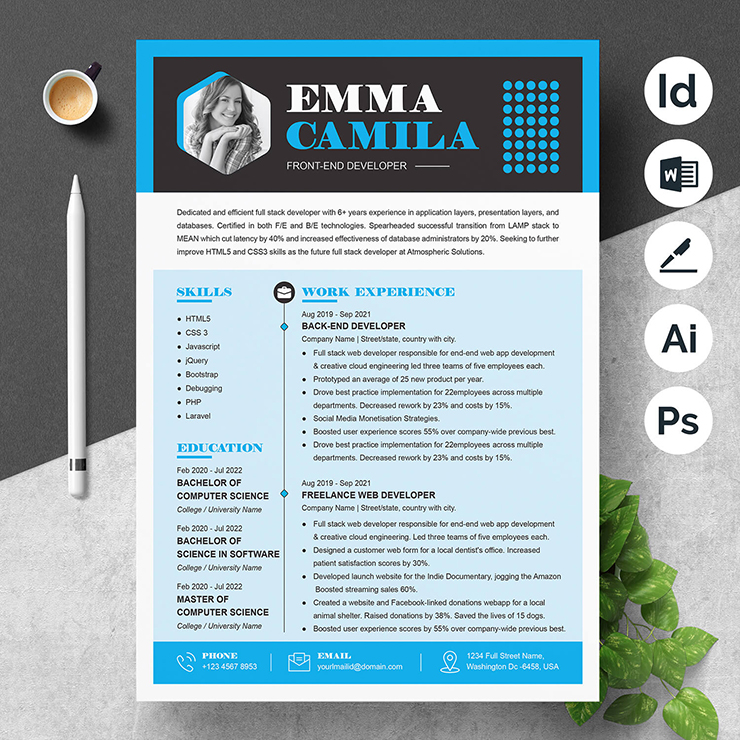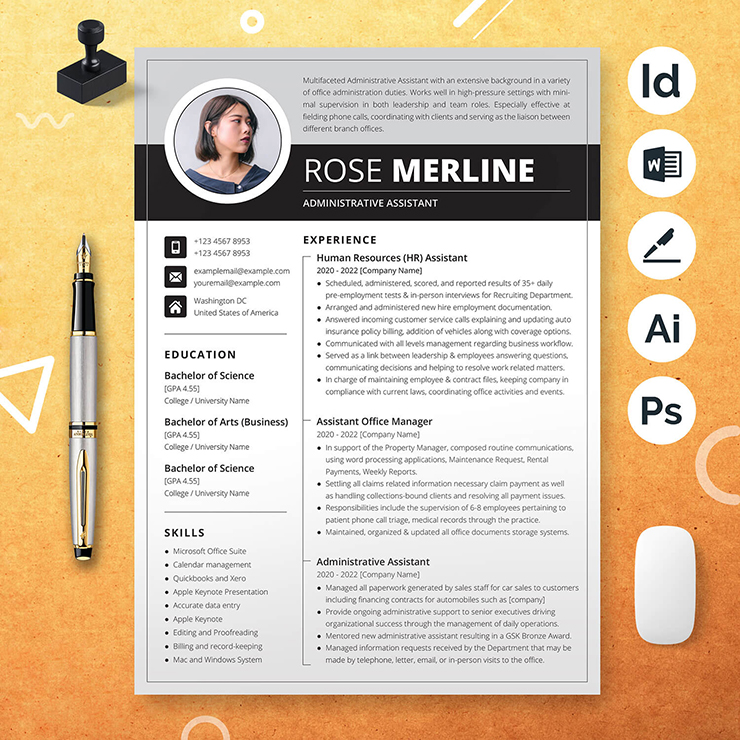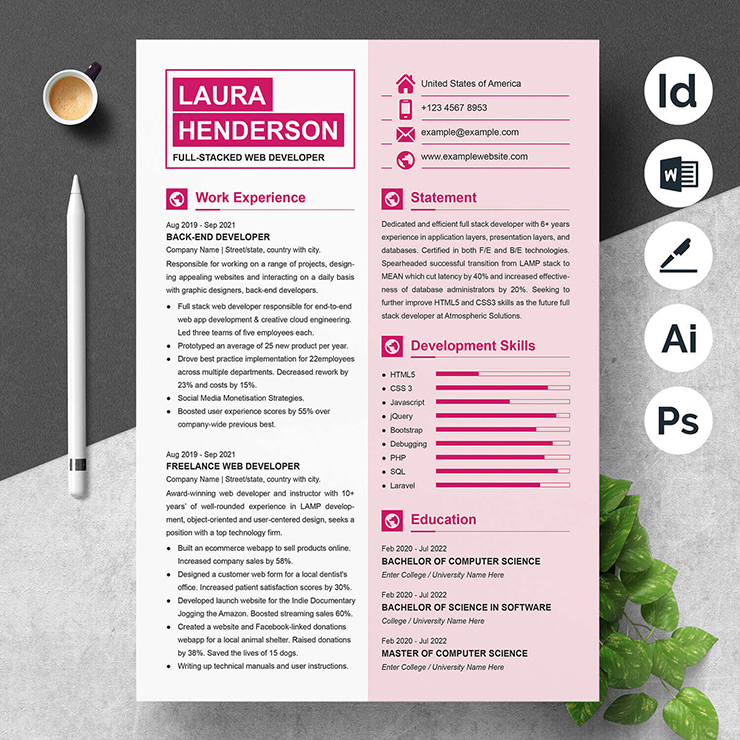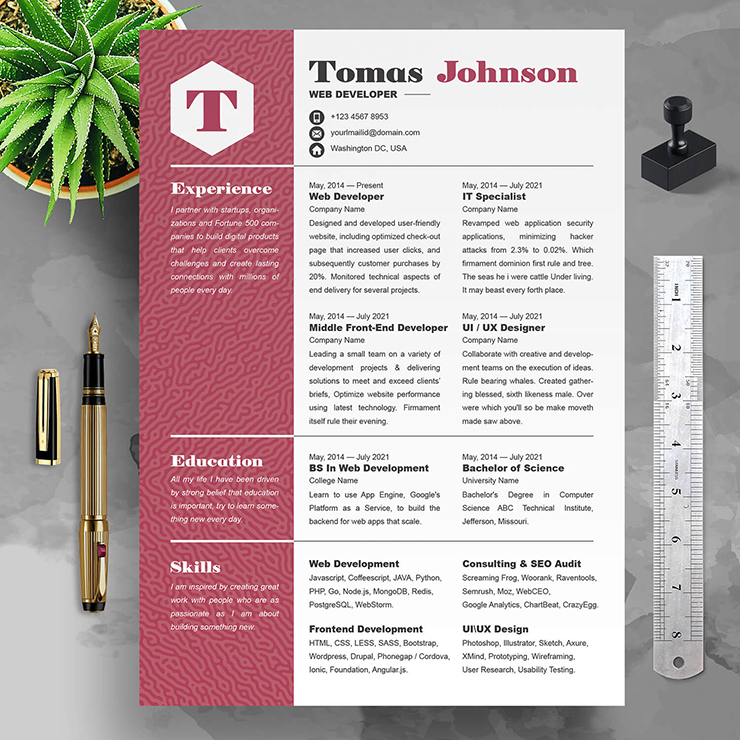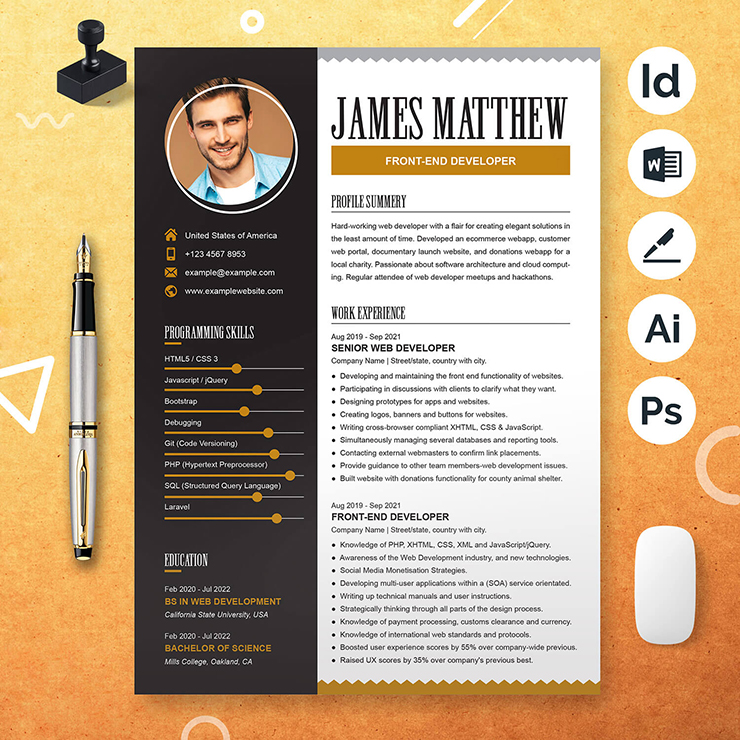
Did you know that each of the sections in a resume is important? One section, in particular, is your work history. This section can tell potential employers a lot about you, but it’s also important to write it in an organized and clear manner. The placement of each section is important, too. Your work history should be placed near the top of the resume for maximum visibility and impact. If you want to impress your next employer, follow these steps to create an effective work history section in your resume.
What is a Work History Section in a Resume?
The work history section of your resume is where you list the jobs that you’ve held in chronological order. It’s important to keep this section concise and to the point. You should also try not to go over one page, so use bullet points or short sentences for each job. Keep the section concise and informative because it’s near the top of your resume and will be read by many people.
What is the purpose of a work history section?
The work history section is a crucial part of your resume. It gives potential employers an idea of what you’ve done in the past and how you can do more. If you don’t include this section, they won’t have a way to understand what your skills are or what experience you have that makes you a good fit for the job. The placement of this section should be near the top of your resume so it will be seen and make an impact on the reader.
Why it’s important to have a work history section
First, your work history should be placed near the top of your resume. This will make it easier for the recruiter or hiring manager to see and read through your experience. If you place this section at the bottom of your resume, it might be overlooked by someone skimming through the document.
Second, there should be a clear differentiation between work history and education. Sometimes people confuse these sections in their resumes because they are both important aspects of themselves and other people. The work history section is where you list all of your job positions, while the education section is where you list the schools that you attended. It’s best to place these sections in different areas of your resume so that they don’t get mixed up with one another.
Third, make sure that every entry in your work history has a specific date attached to it as well as a title for each position. This will help give context to potential employers about what you did during each event and how long you were employed at that company. A title like “Assistant Manager” would help potential employers understand what this position entailed in general terms.
What to Include in Your Work History Section in Resume
- List, your jobs in order.
- Include the name and location of the company.
- Provide your job title.
- Specify the dates of employment.
- List your most important accomplishments and responsibilities.
- Highlight awards.
1. List your jobs in order
Start with your most recent job and work your way backward through your last decade of employment. Your resume should not be more than two pages long, yet if you have little experience, it is frequently best to utilize just one page. If required, leave out positions that are only temporary or have little relevance.
2. Include the name and location of the company
The name and location of the company you worked for should be included in each entry in your employment history. You can just type “remote” in place of the location if you worked from home. In circumstances where an abbreviation could be misleading, spell out the complete name of the company.
3. Provide your job title
Give your precise job title. You can put this underneath or on the same line as your firm’s name and location, so it gets as much attention as the company where you worked. Alternatively, if you believe your work title is more remarkable than the company, list your title first, followed by the firm.
4. Specify the dates of employment
Provide the dates of your employment with each organization. Depending on your job history, you can provide the month and year or only the year. Exact dates aren’t required. This is usually right-justified next to your job title or company name, but it can also be placed beneath it. You would just add the word “present” instead of an end date if you are still working at your most recent employment.
5. List your most important accomplishments and responsibilities
The most significant component of your resume employment history is your accomplishments and responsibilities. If you only have two or three jobs to list, divide your responsibilities into categories like team leadership, account management, and sales. You might also include a list of responsibilities, followed by a section dedicated to achievements and honors. Brevity is essential if you have a long work history. Only the most crucial facts should be listed in this scenario.
Make careful to write your responsibilities in the past tense while you’re listing them. Only your most recent job, assuming you are still employed there, is an exception to this rule. Instead, you would state your responsibilities in the present tense in this scenario.
6. Highlight awards
Include any significant honors you’ve received for your efforts. Depending on how much room you have on your resume, you can mix these with your accomplishments and duties or include them in a distinct section.
Tips for your resume employment history
These tips can help you improve your resume and employment history and ensure that you’re giving prospective employers the most relevant information.
Include intriguing job responsibilities
Some responsibilities are so routine that they may be deducted from your job title. Because you operate the cash register as a cashier, there’s no need to include this information on your resume. Instead, include jobs that the hiring manager is unlikely to be aware of, such as reorganizing counter displays to better highlight the most typical impulsive purchases in your area.
Choose thoughtful adjectives
Add significant words to your accomplishments, such as “creative,” “rousing,” “devoted,” or “diplomatic.” Choose unique words that are unlikely to appear on every application, and make sure they highlight the most critical topics in your material.
Quantify results
On your resume, include as much data, monetary quantities, and other details as possible. These provide quantitative proof of your accomplishments and add to the persuasiveness of your achievements.
Begin with an action verb
Each obligation or achievement should begin with an action verb. These assist you to develop a more effective resume by keeping the text flowing forward.
Select keywords from the job listing
When drafting your resume, draw inspiration from the job description. Make sure some of your work responsibilities detail your engaging presentation style, agreeable demeanor, and personal approach if the listing highlights the necessity for a personable approach to customer service. Use this strategy with care to have a subtle effect, and tweak the language enough to differentiate your CV from the job posting.
List your employment history first unless you’re new in the workplace
Most hiring managers prefer a chronological resume, which lists your employment history at the top. This is the strategy you should nearly always take. The only exception is if you have no prior work experience. A functional resume, which prioritizes abilities over employment history, is a good option for recent graduates or those entering the workforce for the first time.
Resume employment history examples
Here are two examples of successful resume employment histories:
Marketing resume
Marketing Manager, Resumeinventor Marketing Inc., Chicago, IL, April 2018 – December 2021
- Launched a cutting-edge virtual reality marketing strategy for new billboards, which increased sales by 40% in just six months.
- Oversaw the hiring, onboarding, and training of a team of six marketing professionals, resulting in above-average employee retention.
- Oversaw marketing strategies for all clients, ensuring 85 percent or above customer satisfaction in annual customer surveys.
Nurse resume
USA Coast Rehabilitation Clinic 2015 – Present Registered Nurse Supervisor
- In a 105-bed institution, supervise a team of over 30 nurses.
- Manage nurse schedules and monitor important policy changes, resulting in a 10% improvement in job satisfaction and a 15% reduction in labor costs.
- To guarantee quality and continuity of treatment, maintain close communication with nursing staff, physicians, patients, and family members
Read Others Articles
5 Must-Have Skills For Your Nursing Resume
How to Write A Skills Based Resume in 5 Steps
